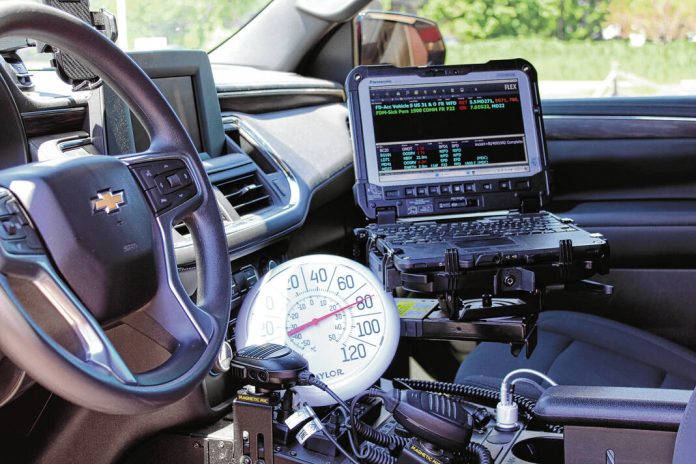As the peak of summer arrives, so do the hot temperatures and the risk of children and pets being left in hot cars.
In the past 25 years, more than 970 children have died from heatstroke because they were left or trapped in a hot car, according to the National Highway Traffic Safety Administration. In recent years, there have not been any deaths from children in hot cars in Johnson County, but it could certainly happen here.
Bargersville Fire Deputy Chief Mike Pruitt said that cars left out in the heat turn into a death trap for animals and small children. It is never OK to leave a child or pet in a car unattended, he said.
Part of why it is so dangerous to leave a child in a hot car is due to how quickly a child’s body temperature rises in comparison to adults. A child’s body temperature rises three to five times faster than an adult’s, according to the NHTSA.
“There’s really nothing to shade the interior of that vehicle and that’s why it gets so hot,” Pruitt said. “What happens is that they end up suffering from heatstroke, which is that internal core temperature rising in the body, and once it reaches that high temperature — higher than 106 degrees — that becomes deadly.”
Even temperatures as low as 60 degrees can be dangerous. There is no good time during the summer because of just how hot it gets in unattended vehicles, he said.
Pruitt demonstrated how quickly a vehicle can heat up when under direct sunlight Monday at Bargersville Community Fire Station 201, where the temperature was only in the mid-70s.
First, a thermometer placed inside the vehicle read 70 degrees with the air conditioning on. After he turned the vehicle off, it only took 10 minutes in the sun for the temperature inside the car to rise 10 degrees to 80 degrees.
The National Weather Service forecasts that temperatures Thursday will reach into the low 80s for the county. For those traveling with children or pets, hotter temperatures can mean that the internal temperature of vehicles will be even higher than the temperatures reached during the demonstration.
When a child or animal is left in a hot car for longer times and/or hotter conditions, the situation can quickly become deadly — especially when symptoms of heat stroke can occur when one’s body temperature reaches 104 degrees, the NHTSA says.
Bystanders should keep an eye out for a child or animal in distress inside a vehicle. After identifying if they are in distress, it is essential to remove them from the hot car as soon as possible, Pruitt said. It is legal to break a car window in order to remove a child from a hot car. When it is a pet, it is still legal; however, the person breaking the window may be partially responsible for damages to the vehicle, per Indiana law.
After removing the child or animal from the car, people should call 911 and work to cool off the child or animal by bringing it indoors until medical personnel arrive on the scene, Pruitt said.

Pruitt also noted that it is rare for someone to do this on purpose, and it usually occurs due to various, day-to-day distractions. As an example, a father could be taking their child to work with them when, usually, the child does not come to work with him, and he forgets his child is in the car and leaves for the office — leaving the child for hours in a hot car unintentionally, Pruitt said.
“As hard as that is to believe that someone could actually do that, it happens in today’s world where people are so distracted that does occur,” Pruitt said. “So that’s why we always tell people if you are, anytime, while you’re taking a child somewhere, put your purse, put something in the backseat that you’ve got to retrieve so that you can check on that before you get out of your car and walk away.”
Some newer vehicles even use sensors to remind drivers to check the back seat for passengers and belongings after they turn the vehicle off. By the 2025 model year, all vehicles will carry a rear passenger alert system, according to Kelley Blue Book.
Pruitt emphasized a common phrase associated with hot car death prevention: Stop. Look. Lock. Coined by the NHTSA, the campaign is meant to educate parents about the dangers of heatstroke and to always check locked vehicles before leaving.
“Stop and look and make sure everything’s out of the vehicle with the kids out of the vehicle and then lock your car after the fact,” Pruitt said.





